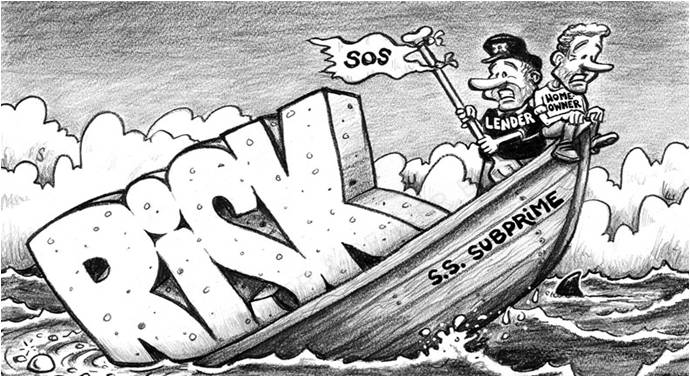The US Subprime and Foreclosure Mess
When the housing market collapsed during the last decade there was a very sharp increase in the number of properties that were affected by foreclosure. Most of the blame at the time was laid at the door of lenders who had given mortgages to people who could not really afford them – the so called subprime market. This was also the focus of many studies that took place at the time to try and found out why the crisis happened.
However, typically less than 20% of the entire housing market is made up of subprime borrowers so more recent studies have looked into just how much of an effect the subprime market could have really had on the financial crisis. There is a time for gambling, such as when you are playing at Vegas Palms Online Casino, but the gamble that was made by subprime lenders almost ten years ago did not pay off. It seems unfair to lay all the blame here though.
These newer studies have found that even though subprime lending had a large role to play in the beginning of the crisis, this role soon diminished even though the crisis showed no sign of coming to an end. In the period between 2008 and 2012 twice as many prime borrowers had their property foreclosed than subprime homeowners.
The main problem that affected both prime and subprime borrowers was negative equity. As house prices started to fall, more and more people found that they owed more on their mortgages than what their home was worth. This caused problems because people found themselves in an impossible position. Their mortgage payments were rising, possibly to levels that they couldn’t afford but there were unable to try and sell their property because the money they got from the sale would not have been enough to clear their mortgage.
Confidence in the banks was severely shaken during this financial crisis and this could be one reason why the market took so long to recover. When it comes to financial transactions customers want to know that their personal information is protected, such as with secure withdrawals and deposits at Vegas Palms. This contributed to somewhat of a stagnation in the housing market because no one was buying much in the way of property.
The conclusion that these new studies have drawn was that the economic conditions and the affect that these had on house prices had far more effect on foreclosure rates than whether the borrower was considered to be prime or subprime. Although subprime borrowers tended to the first that had their properties foreclosed, the problem did not just affect this sector.
New regulations that have been introduced since the collapse of the housing market have focused on stricter lending criteria with stringent affordability tests carried out in order to try and prevent a similar situation happening again. However this may not be enough on its own because it does not address the fact that if house prices rise rapidly as they did before the financial crisis, there is going to come a point when these prices start to crash.

